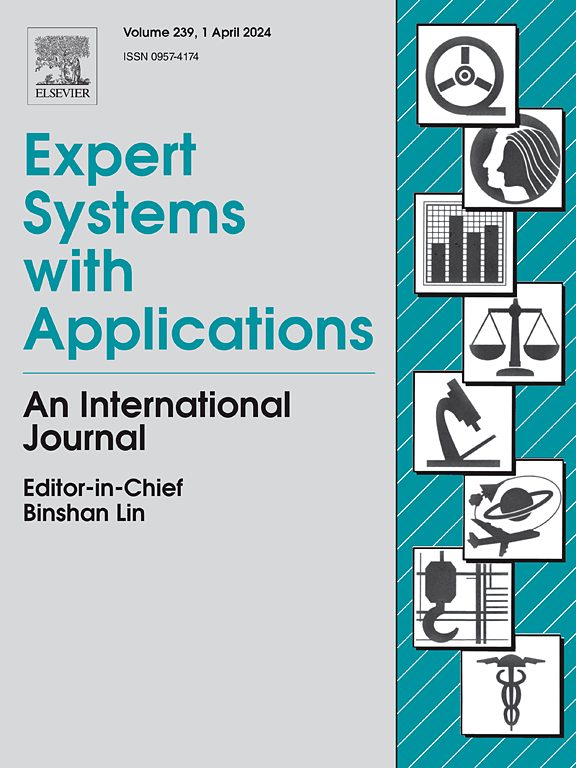EEG-DTIL: An EEG-based dynamic task-incremental learning method for decoding ADL-oriented motor imagery pairs
IF 7.5
1区 计算机科学
Q1 COMPUTER SCIENCE, ARTIFICIAL INTELLIGENCE
引用次数: 0
Abstract
Patients with strokes are likely to suffer from dyskinesia and lose their ability to perform activities of daily living (ADL). Motor neurorehabilitation can be gradually realized by continuously learning ADL-oriented motor imagery (MI) pairs with opposite directions, and an electroencephalography (EEG)-based brain-computer interface (BCI) is an effective solution. However, decoding the undetermined streams of MI pairs remains a great challenge for maintaining the balance between new and old tasks. Thus, an EEG-based dynamic task-incremental learning method, called EEG-DTIL, is proposed for decoding progressively incoming MI pairs. Based on the wavelet packet transform, all of the reconstructed subband signals are applied to extract global-view spatial features (GSF) via the regularized common spatial pattern, and the preferred parts are used to capture local-view spatial features (LSF) via tangent space mapping from the Riemannian space. Multiview spatial features (MvSF) are obtained after performing fusion and dimensionality reduction on the GSF and LSF. Inspired by the broad learning system (BLS), a series of personalized sub-BLSs are created in the same order as the inflowing MI pairs and used to construct a residual-based stacked BLS (R-SBLS). Moreover, a dynamic weight consolidation block (DWC) is developed to remember more learned knowledge by controlling the key output weights to be updated within a low error range. Finally, R-SBLS and DWC are combined in parallel, forming a dynamic incremental learning network (DRI-Net). On public and self-collected datasets, EEG-DTIL achieves incremental decoding accuracies of 70.53% and 71.80% for task streams with two and three MI pairs, respectively. The experimental results demonstrate that EEG-DTIL is significantly superior to the related methods, exhibiting better plasticity for new MI pairs, retainability for old MI pairs, and robustness to MI pair sequences.
一种基于脑电图的动态任务增量学习方法,用于解码面向adl的运动意象对
中风患者可能会出现运动障碍,失去日常生活活动的能力。运动神经康复可以通过不断学习以adl为导向的相反方向的运动意象(MI)对来逐步实现,而基于脑电图(EEG)的脑机接口(BCI)是一种有效的解决方案。然而,解码MI对的未确定流仍然是维持新旧任务之间平衡的巨大挑战。因此,提出了一种基于eeg的动态任务增量学习方法,称为EEG-DTIL,用于逐步解码传入的MI对。基于小波包变换,将重构的子带信号通过正则化的公共空间模式提取全局视图空间特征(GSF),并利用优选部分从黎曼空间通过切空间映射捕获局部视图空间特征(LSF)。对GSF和LSF进行融合和降维后得到多视图空间特征(MvSF)。受广义学习系统(BLS)的启发,以与流入的MI对相同的顺序创建一系列个性化的子BLS,并用于构建基于残差的堆叠BLS (R-SBLS)。此外,还开发了一种动态权值整合块(DWC),通过控制关键输出权值在低误差范围内更新来记忆更多已学习的知识。最后,将R-SBLS和DWC并行结合,形成动态增量学习网络(DRI-Net)。在公共数据集和自收集数据集上,EEG-DTIL在具有两个和三个MI对的任务流上分别实现了70.53%和71.80%的增量解码准确率。实验结果表明,EEG-DTIL对新MI对具有更好的可塑性,对旧MI对具有更好的保留性,对MI对序列具有更好的鲁棒性。
本文章由计算机程序翻译,如有差异,请以英文原文为准。
求助全文
约1分钟内获得全文
求助全文
来源期刊

Expert Systems with Applications
工程技术-工程:电子与电气
CiteScore
13.80
自引率
10.60%
发文量
2045
审稿时长
8.7 months
期刊介绍:
Expert Systems With Applications is an international journal dedicated to the exchange of information on expert and intelligent systems used globally in industry, government, and universities. The journal emphasizes original papers covering the design, development, testing, implementation, and management of these systems, offering practical guidelines. It spans various sectors such as finance, engineering, marketing, law, project management, information management, medicine, and more. The journal also welcomes papers on multi-agent systems, knowledge management, neural networks, knowledge discovery, data mining, and other related areas, excluding applications to military/defense systems.
 求助内容:
求助内容: 应助结果提醒方式:
应助结果提醒方式:


